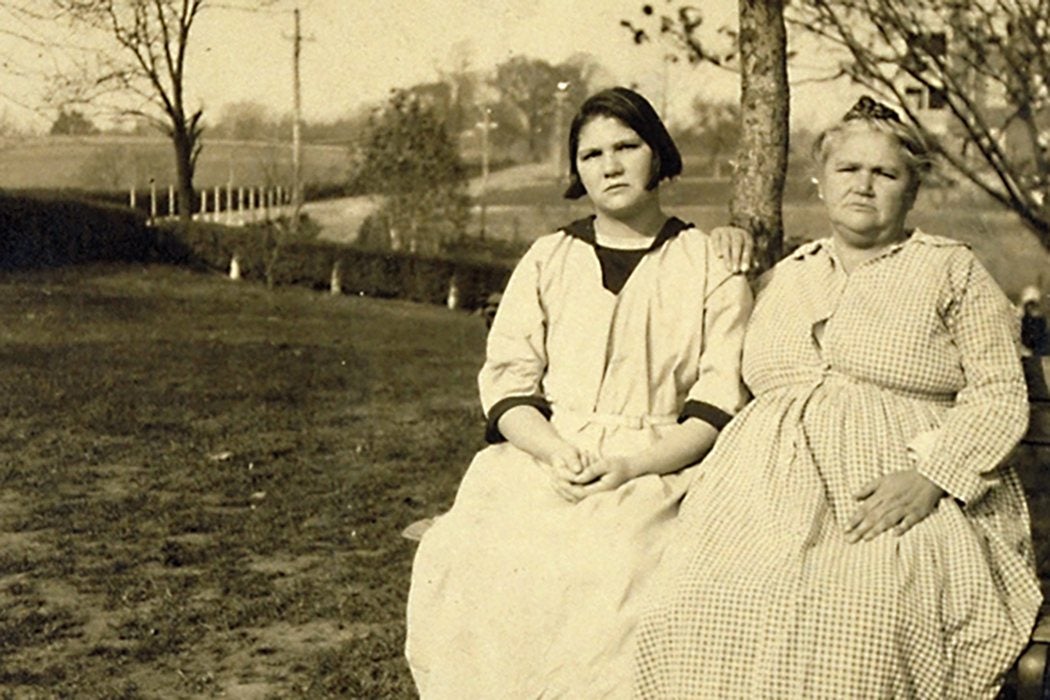The 1927 case of Buck v. Bell is infamous for Justice Oliver Wendell Holmes’s thundering conclusion: “Three generations of imbeciles are enough.” By a vote of 8 to 1, the Supreme Court of the US allowed the forced sterilization of Carrie Buck (1906–1983) by the state of Virginia. Buck’s was the first of thousands of such sterilizations in the state before the practice was ended in 1974. Virginia’s stated intent was to prevent Buck, already a single mother, and the others from conceiving “genetically inferior” children.
Buck v. Bell was a great legal victory for the American eugenics movement, which, via a misunderstanding of genetics, strove to perfect the “race” and “white” civilization. As Michelle Oberman writes in her essay on the lessons of Paul Lombardo’s revelations about the case, the pseudoscience of eugenics emerged in the 1890s. It was a Progressive Era cause with the financial backing of the Carnegie Foundation, John D. Rockefeller, and other plutocrats.
Though there was “surprisingly robust debate about when and whether the state should invoke the authority to sterilize a certain class of citizens,” Oberman notes that determined eugenicists pushed hard for such laws and succeeded in most states. By 1939, some 30,000 sterilizations had been performed, more than half of them in California.
Like eugenics itself, Buck v. Bell turned out to be based on falsehoods. Paul Lombardo discovered that Carrie Buck had no hereditary “defects.” She wasn’t even “feebleminded” by the dubious definitions of the day. Her real crime was that she was poor and “illegitimate.” She was in the Virginia Colony for Epileptics and the Feebleminded because, in a perfunctory commitment hearing, her foster parents dumped her there after she became pregnant. Carrie Buck’s child, Vivian—the third of Holmes’s “imbecile” generations—was conceived in rape. The rapist had been a relative of Carrie’s foster parents; this may have been another reason they wanted her out of the way.
At six months of age, Vivian Buck was looked at by a social worker and deemed to be just like her mother. The social worker’s testimony concluded “[t]here is a look about it that is not quite normal, but just what it is, I can’t tell.”
Yet like her mother and grandmother, Vivian was neither feebleminded nor imbecilic (this also had a strict definition then). In fact, Vivian’s report cards showed her to be an average student who worked her way up to the honor roll before her early death at the age of eight. (Stephen Jay Gould wrote that the “ambiguous diagnosis” on her death certificate “might well indicate she fell victim to one of the preventable childhood diseases of poverty.”)
Weekly Newsletter
Oberman cautions that using the word “state” or “Virginia” allows for too much anonymity. It was a “cadre of earnest, self-righteous, and occasionally delusional individuals”—lawyers, politicians, doctors, and others who thought they were doing good—who instituted a system that surgically sterilized tens of thousands against their will or, as in the infamous “Mississippi appendectomy,” quite deceptively. Their victims were poor, disproportionately women, and often women of color.
The Nazis, who sterilized hundreds of thousands before moving onto outright mass murder, used American eugenicist theory, such as it was, and practice as an excuse for their own.
Editor’s Note: The punctuation in the story was updated to conform to Daily’s current style.







